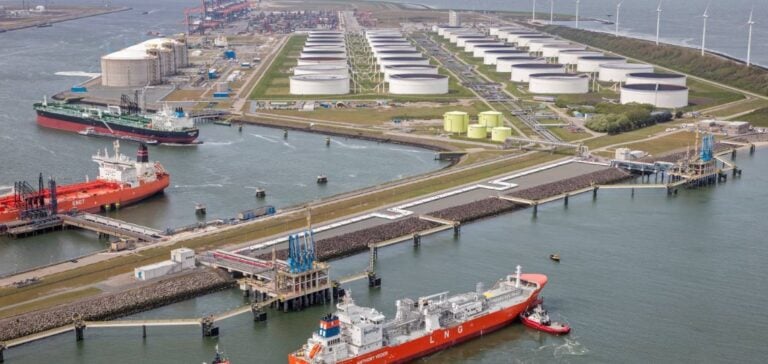The ever-changing European natural gas market is showing worrying signs for industry players in 2025.
Price differentials between summer and winter contracts on the Dutch TTF, the main reference index, are at an all-time low.
Such a squeeze complicates storage strategies, raising questions about the profitability of injections for the coming year.
Currently, the 2025 summer contract is trading at an average discount of 1.42 EUR/MWh to its winter counterpart, well below the level needed to stimulate storage operations.
Spreads too narrow to encourage storage
Industry professionals agree that these narrow margins do not provide sufficient incentives for operators.
In 2023, the spread between summer and winter contracts reached 3.16 EUR/MWh, enabling economical injections into storage facilities across Europe.
For 2025, spreads should widen to at least 2 EUR/MWh to cover the costs associated with storage operations.
A France-based portfolio manager argues that storage operators must now speculate on widening spreads to make injections viable.
With strict regulatory requirements in place, EU member states must fill their storage facilities to 90% capacity by November 1.
However, with such tight gaps, market players could resort to emergency mechanisms to meet these targets.
The regulation imposed in June 2022 obliges EU countries to fill their storage facilities to at least 80% by November 1, 2022, and to 90% for subsequent years, making the situation even more binding for 2025.
Analysis of Hubs and Technical Constraints
Spread dynamics are not uniform across the continent.
The profitability of injections depends heavily on the costs and capacities of each storage hub.
For example, injections at the Austrian CEGH VTP hub may remain profitable under current conditions, while those at the French PEG hub may not.
This discrepancy illustrates the need for operators to consider the specific characteristics of each site and adopt strategies tailored to their operating costs and injection capacity.
Injection speed also plays a crucial role.
Plants that inject more slowly will be less competitive in the face of tight spreads.
According to one UK-based analyst, inventory management for 2025 may depend on each site’s ability to optimize their operations in the face of these new market constraints.
Concerns about Liquefied Natural Gas (LNG) and Infrastructure Delays
At the same time, the liquefied natural gas (LNG) market in Europe is also showing worrying signs.
Price differentials between summer and winter contracts are narrowing.
The 2025 summer contract for LNG in Northwest Europe is valued at $11.64/MMBtu, while the 2025 winter contract is $12.11/MMBtu.
These margins are among the lowest observed since February 2023, and reflect the growing uncertainty regarding LNG supply over the next few years.
Delays in infrastructure development, particularly in the United States, are a major contributing factor.
Some LNG infrastructure projects in the USA, which are essential for increasing supply, are experiencing delays due to market constraints such as labor shortages, high interest rates and inflation.
This situation could keep pressure on prices and spreads until 2027.
Analysts predict that additional regasification capacity could eventually ease these tensions, but uncertainties over the exact timing are weighing on supply strategies.
Market Outlook and Necessary Adjustments
Market players must therefore navigate an uncertain environment where tight spreads and supply challenges persist.
Although the outlook beyond 2025 points to a possible easing of market tensions, the coming years could require significant strategic adjustments for operators.
Some experts suggest that hubs may have to review their storage costs or adapt their injection capacities to remain competitive.
Faced with these developments, the ability of regulators and operators to adapt quickly will be essential to avoid major imbalances in the European energy system.
The coming months will be crucial in determining whether current market mechanisms will be sufficient to stimulate the injections needed to meet regulatory targets, or whether more direct intervention will be required to ensure the region’s energy security.






















